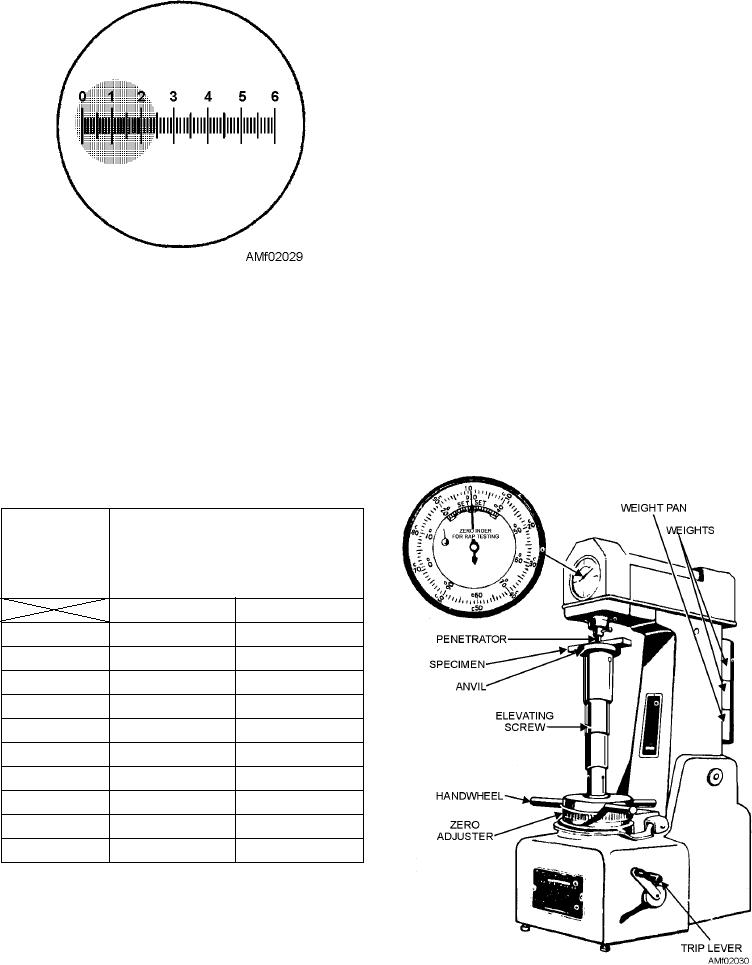
to the machine. The more shallow the penetration, the
higher the hardness number.
Two types of penetrators are used with the
Rockwell tester--a diamond cone and a hardened steel
ball. The load that forces the penetrator into the metal is
called the "major load," and is measured in kilograms.
The results of each penetrator and load combination are
reported on separate scales, designated by letters. The
penetrator, the major load, and the scale vary with the
kind of metal being tested.
For hardened steels, the diamond penetrator is
used, the major load is 150 kilograms, and the hardness
is read on the C scale. When this reading is recorded,
the letter C must precede the number indicated by the
Figure 2-29.--Microscope view of impression.
pointer. The C-scale setup is used for testing metals
ranging in hardness from C-20 to the hardest steel
(usually about C-70). If the metal is softer than C-20,
tester. Figure 2-29 shows an impression as seen through
the B-scale setup is used. With this setup, the 1/16-inch
the microscope. After measuring the diameter of the
ball is used as a penetrator, the major load is 100
impression, the measurement is converted into the
kilograms, and the hardness is read on the B scale.
Brinell hardness number on the conversion table
furnished with the tester. A portion of the conversion
table is shown in table 2-3.
Table 2-3.--Portion of Conversion Table Furnished with
Brinell Tester
Diameter of
Hardness number for load of kg
ball
impression
(mm)
500
3000
2.0
158
945
2.05
150
899
2.10
143
856
2.15
136
817
2.20
130
780
2.25
124
745
2.30
119
712
2.35
114
682
2.40
109
653
2.45
100
627
Rockwell Tester
The Rockwell hardness tester, shown in figure
2-30, measures the resistance to penetration as does the
Brinell tester, but instead of measuring the diameter of
the impression, the Rockwell tester measures the depth,
and the hardness is indicated directly on a dial attached
Figure 2-30.--Rockwell hardness tester.
2-35

